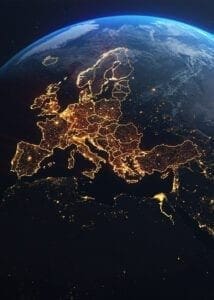Lost at Sea: The Enduring Mystery of the Bermuda Triangle
The Bermuda Triangle, also known as the Devil’s Triangle, is one of the world’s most intriguing mysteries. Located in the western part of the North Atlantic Ocean, this loosely defined region covers an area between Miami, Bermuda, and Puerto Rico. Over the years, it has been the subject of countless myths, legends, and theories due to the disappearance of ships, planes, and people with little to no explanation. This article aims to explore the history, the incidents, the scientific explanations, and the continuing allure of the Bermuda Triangle.

History and Background of the Bermuda Triangle
The term “Bermuda Triangle” was first coined by Vincent Gaddis in a 1964 magazine article, and since then, it has captured the imagination of the public and researchers alike. The area does not appear on any official world maps and the U.S. Board on Geographic Names does not recognize the Bermuda Triangle as an official geographic area. Nevertheless, its mystery remains a popular topic of discussion.
Notable Incidents
Several incidents have contributed to the legend of the Bermuda Triangle. Some of the most famous include:
- The USS Cyclops disappearance in 1918, a Navy cargo ship with over 300 people on board vanished without a trace.
- Flight 19 in 1945, a training flight of five TBM Avenger bombers disappeared over the Triangle, leading to one of the largest search and rescue missions in history. The rescue plane sent after them, a Martin PBM Mariner, also disappeared.
- The disappearance of the cargo ship SS Marine Sulphur Queen in 1963, along with its 39 crew members, under mysterious circumstances.
Scientific Explanations
Despite the allure of paranormal explanations, most scientists believe there are rational explanations for the mysteries surrounding the Bermuda Triangle. Some of these include:
- Environmental Factors: The Gulf Stream, a strong ocean current that runs through the Bermuda Triangle, can quickly erase evidence of a disaster. Sudden storms and rogue waves, which can reach up to 100 feet, could also contribute to the disappearances.
- Human Error: Navigation errors and lack of experience can lead to accidents, especially in an area frequented by ships and planes.
- Methane Hydrates: Researchers have proposed that methane hydrates—methane gas trapped in sediments under the sea—might explain some disappearances. Methane eruptions could theoretically reduce the density of water, causing ships to sink instantly.
The Continuing Allure
Despite scientific explanations, the Bermuda Triangle continues to fascinate. It represents a convergence of the natural and the supernatural, the explained and the unexplained. This enduring allure stems from the human desire for mystery and the unknown, as well as the romanticized portrayals in literature and popular media.
The Bermuda Triangle remains a captivating enigma, a reminder of the mysteries that still exist in our modern world. While scientific explanations have provided plausible reasons for many of the disappearances, the Triangle continues to intrigue and inspire. Whether seen as a place of genuine mystery or simply a region prone to natural phenomena, the Bermuda Triangle challenges our understanding of the natural world and keeps the flame of curiosity alive in our quest for knowledge and exploration.








